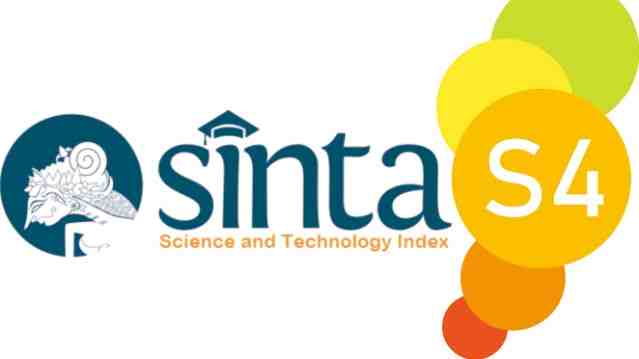Identifikasi Orchid Mycorrhiza Pada Akar Anggrek Dendrobium nobile
https://doi.org/10.25273/florea.v10i2.21187
Keywords:
Orchid fungi, Rhizoctonia, Mycorrhiza, Orchid SpesiesAbstract
Orchid mycorrhiza is a type of fungus that is able to associate well with orchid plants. Orchids require fungal hyphae infection at every phase of their growth and development. Mycorrhizal fungi provide the organic and organic nutrients needed by orchid planting. Meanwhile, orchid plants are suppliers because the results of photosynthesis of orchid plants are distributed in the body of fungi as an energy source. Given the importance of the prospect of mycorrhizal utilization for orchids, it is necessary to continue to develop studies on identification. The purpose of this study is to isolate, identify and characterize mycorrhiza in Dendrobium nobile orchids. The method used was with a descriptive design on the identified orchids, samples in the form of Dendrobium nobile orchid roots, the media used was PDA media, transverse and longitudinal root cut types. The way it works includes sample preparation, media preparation, fungal isolation, fungal colony purification,
Downloads
References
Alexopoulus dan Mims. (1996). Introduktory Micology. New York : John Wiley and Sonc, Inc.
Andersen, T.F .& H.N .Rasmussen. (1996). The Mycorrhizal species of Rhizoctonia .In :Sneh, B., S.Jabaji-Hare, S .Neate, & G .Dijst.Rhizoctonia Spesies :Taxonomy, Molecular Biology, Ecology, Pathology and Disease Control .KAP.London .379-390.
Arditti, J. (1992). Fundamentals of orchid biology. John Wiley dan Sons, Inc. New York: xii +691 hlm.
Athipunyakom, P., L. Manoch dan C. Piluek. (2004). Isolation and Identification of mycorrhizal fungi from eleven terrestrial orchids. Natural science 38(2): 216-228.
Brundett, M., N. Bougher, B. Dell, T. Grove dan N. Malajczuk. (1994). Working with mycorrhizas in forestry and agriculture. International Mycorrhizal Workshop, Kaiping, China: iii +347 hlm.
Dressler, R. L. (1981). The Orchids: natural history and classification. Harvard University Press, Cambridge: 332 hlm.
Misrofah, S., Setiari, N., Nurchayati, Y., & Suedy, S. W. A. (2022). Pertumbuhan Anggrek Cymbidium ensifolium (L.) Sw. dengan Pemberian Pupuk Hayati Mikoriza. Jurnal Hortikultura Indonesia, 13(1), 35-42.
Mufidah, A. L. A., Syauqi, A., & Rahayu, T. (2017). Karakteristik mikoriza anggrek Dendrobium sp. dan Spathoglottis sp. pada media PDA dengan perbedaan pH. Jurnal Ilmiah Biosaintropis (Bioscience-Tropic), 3, 51-57.
Mursidawati, S. (2004). Kehidupan Didymoplexis pallens (Orchidaceae) di habitatnya: sebuah model manajemen konservasi anggrek alam. Buletin Kebun Raya Indonesia 10(1): 24-30.
Peterson, R. L dan M. L. Farquhar. (1994). Mycorrhiza integrated development between roots and fungi. Mycologia 86(3): 311-326.
Rasmussen, H. N. (2002). Recent developments in the study of orchid mycorrhiza. Plant and soil 244: 149-163.
Saha, D dan A. N. Rao. (2006). Studies on endophytic mycorrhiza of some selected orchids of arunchal Pradesh-1. Isolation and identification. Bulletin of Arunachal Forest Research 22(1&2): 9-16.
Salsabila, N. R. (2024). Kapang endofit akar anggrek tanah di taman nasional gunung gede pangrango (tnggp) sebagai pemacu pertumbuhan tanaman dan penghambat phytophthora capsica. Thesis. Fakultas Sains dan Teknologi UIN Syarif HIdayatullah Jakarta.
Sari, N. (2020). Review fungi endofit sebagai agen biokontrol serangan patogen pada tanaman. Gontor Agrotech Science Journal, 6(1), 55-73.
Sneh, B., Burpee, L., Ogoshi, A. (1991). Identification of Rhizoctonia Species. APS Press. St.Paul. MN.
Sugiyarto, L., S. Umniyatie dan V. Henuhili. (2016). Keanekaragaman Anggrek Alam dan Keberadaan Mikoriza Anggrek di Dusun Turgo Pakem, Sleman Yogyakarta. J. Sains Dasar. (2) : 71-80.
Widiastoety, D., Solvia, N., & Soedarjo, M. (2010). The Potential of Dendrobium Orchids in Increasing the Variety and Quality of Cut Flower Orchids. Journal of Agricultural Research and Development, 29(3): 101-106.
Downloads
Published
Issue
Section
License
Copyright (c) 2023 Florea : Jurnal Biologi dan Pembelajarannya

This work is licensed under a Creative Commons Attribution-ShareAlike 4.0 International License.
Every accepted manuscript should be accompanied by "Copyright Transfer Agreement" prior to the article publication.
Florea : Jurnal Biologi dan Pembelajarannya by http://e-journal.unipma.ac.id/index.php/JF is licensed under a Creative Commons Attribution-ShareAlike 4.0 International License.
Author who publish with this journal agree to the following terms:
- Author not hold and retain copyright and grant the journal of first publication with the work simultaneously licenced under Creative Commons Atribution Licence that allows others to share the work with an acknowledgment of the work's authorship and initial publication in this journal.
- Authors are able to enter into separate, additional contractual arrangements for the non-exclusive distribution of the journal's published version of the work with an acknowledgment of its initial publication in this journal.
- Authors are permitted and encouraged to post their work online prior to and during the submission process, as it can lead to productive exchanges, as well as earlier and greater citation of published work.










